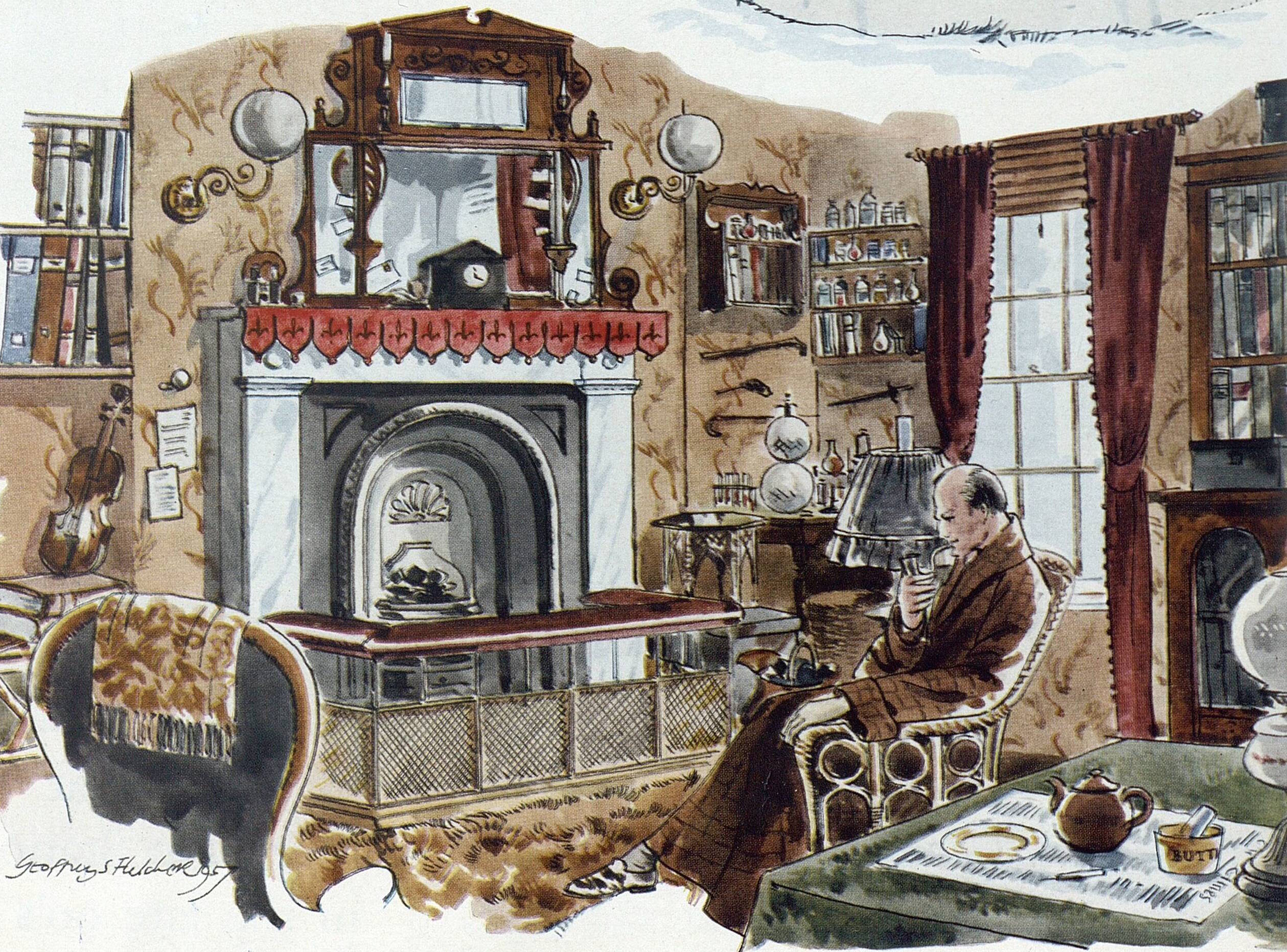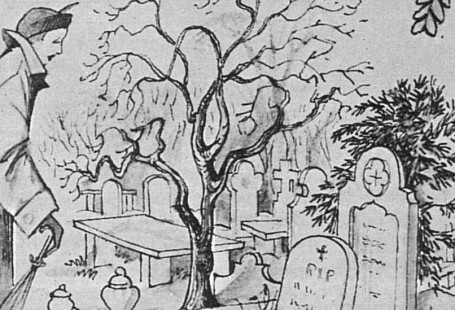Women last week made history in the youngest Service, for the first delivery flights of aeroplanes from factory to storage depot, ‘somewhere in Great Britain,’ were carried out by the Women’s Transport Section of the Air Transport Auxiliary. There are nine members of this body.
So reported The Sketch on 17 January 1940. Four months into the Second World War, and women were making history, and in particular, the nine women who belonged to the Air Transport Auxiliary. These women, along with men pilots from across the world, had the responsibility of ferrying aircraft from factories to aerodromes in the United Kingdom and beyond.

And in this special blog, as part of Aviation April on The Archive, we will be celebrating the pioneering women of the Air Transport Auxiliary (A.T.A.). We will trace their achievements through the pages of our newspapers, and look at what their daily lives were like. We will examine what dangers they faced, and how they were celebrated during the course of the six year conflict.
Register now and explore the Archive
‘Women Pilots of Daring, Skill and Experience’
So why were women needed to fly plans for the Air Transport Auxiliary? The Bystander on 17 January 1940 explains:
A logical development of the enlistment of women where possible to release men for front-line jobs is the formation by the Air Ministry of a section of women pilots who will ferry aircraft from factory to aerodrome.
Eight women pilots had been recruited initially for the A.T.A., which as The Bystander relates was in its ‘first month’s training’ during the month of January 1940. These women reported to Pauline Gower, who had been ‘given administrative charge of the new section.’ She would remain in charge of the women members of the A.T.A. during the course of the war.

As The Bystander details, Pauline Gower was a ‘well-known woman pilot,’ who had run air circuses in aid of hospitals, and had flown over 30,000 passengers before the war. She was given the title of First Officer, with the other eight pilots taking the title of Second Officer.
And these eight women all had at least ‘six hundred flying hours’ to their credit, as details The Tatler on 17 January 1940. Amongst their number was Winifred Crossley, who was a ‘specialist in aerobatics,’ and ‘famous hockey international Mona Friedlander.’ The Sketch described how Gower and her pilots were characterised by their ‘daring, skill and experience,’ whilst The Tatler went as far as to call them ‘angels’ of the skies. During the course of their duties, they were expected to ‘fly more than 15,000 miles a week between them.’

But how had the A.T.A. come about? The nascent organisation had only been formed some four months earlier, upon the outbreak of war, on 2 September 1939. The Sphere on 27 December 1941 relates how its birth was due to a ‘single civilian,’ Gerald d’Erlanger, who by:
…September 11… had gathered a band of forty enthusiastic pilots whose age or eyesight had rendered them unable to pass the very stiff R.A.F. medical examination. Their average flying time was between 800 and 900 hours.
The initial intention behind the formation of the A.T.A. was to facilitate communication, but in the end the organisation’s main role was to ferry planes from one site to another, taking over ‘this tiresome and exacting duty’ from the R.A.F. And when Winston Churchill became Prime Minister, he ‘doubled’ the A.T.A.’s numbers, although the organisation was already employing women by this point.

By 1941, 25 of the original 41 men of the A.T.A. were ‘still going,’ as relates The Sphere, alongside newer recruits. According to the Illustrated London News in August 1943, these men quipped how A.T.A. referred to ‘Ancient and Tattered Airmen,’ although the women who were now in their ranks had to be below the age of 30, as we shall find out later.
‘Terms of Exact Equality’
So members of the A.T.A. were required to ferry aircraft across the country, but what did their daily lives look like? Our newspapers are an invaluable resource for finding out more about those who undertook war work during the Second World War, and they are a goldmine of information about the Air Transport Auxiliary.
In June 1941 the Aberdeen Press and Journal gave an overview of what was expected from A.T.A. pilots, who were responsible for flying ‘new aircraft to a thousand different fields and unsuspected off-the-beaten-track spots in Britain.’ The reason for this dispersal? To avoid a ‘sudden blitz’ by the enemy, which would essentially immobilise the R.A.F. and leave Britain’s skies undefended.

And so, an A.T.A. pilot might fly:
…a bomber from an aerodrome in Southern England to Scotland one morning, take over a Hurrican, and deliver it to the west country by lunch time, fly a general reconnaissance aircraft from there to East Anglia in the early afternoon, and perhaps finds there is a four-engined giant to take to Northern Ireland before dusk.
It was a long day, the Aberdeen Press and Journal details, beginning at 9 a.m. and not ending until 9 p.m.
Meanwhile, the A.T.A. pilots had to follow an exacting rule. Charles Graves for The Sphere in December 1941 explains how the A.T.A. ferry pilots ‘must never fly out of sight of the ground, however the weather conditions may develop.’ They also had to be able to fly a range of different aircraft, something not required to be done by their R.A.F. counterparts. The same Sphere article tells of how ‘it is perfectly normal for a pilot to fly a Mark 5 Spitfire directly after he has flown a Whitley, with a Hudson to follow the next job.’

The pilots of the A.T.A. were divided into six groups, which the The Sphere describes:
Class I fly light types. Class 2 fly aircraft up to, and including, Hurricanes. Then there are Classes 3, 4, 4x, and 5. Dotted throughout the country there are over forty pilots who fly every known type of aircraft.

Aspiring A.T.A. pilots were men either who had flown in the First World War, or were those who had ‘100 hours or so of civilian flying.’ Note how Pauline Gower’s women pilots had considerably more flying experience when they started in January 1940! Men were paid £370 year for their service, and both men and women would have to undertake ‘navigation and flying tests’ before they were accepted by the Air Transport Auxiliary. Once accepted, new pilots would fly ‘the light type of aircraft,’ followed by a variety of courses designed to help them fly more complex models:
Then there comes a technical course, followed by a conversion course. When the pilots pass this successfully, they go on to the Class 2 type of aircraft. After some experience of this, they take a conversion course to enable them to fly twin-engined aircraft like Oxfords. Later on there is another conversion course, and they will start ferrying Blenheims. There are half-a-dozen girls who have reached this stage. And so it goes on up to the all-type pilot.

Charles Graves, who wrote about the A.T.A. for The Sphere, actually visited one of the A.T.A. ferry pools, and was struck by two things. The first was the mix of nationalities of the pilots, they were drawn from Belgium, France, Poland, Austria, Czechoslovakia and even from as far away as Thailand, and the second was:
…the fact that the girl pilots share the same mess and recreation rooms as the male pilots, who treat them on terms of exact equality. And very right, too.
However, Graves relates how the women pilots of the A.T.A. were paid 20 percent less than their male counterparts, and how they had to use their own clothing coupons to buy their uniforms, unless they could get their clothing at the ‘local outfitter,’ who was ‘often out of stock.’

The women pilots would wear ‘slacks,’ or trousers, whilst flying, ‘which they find warmer and more practical.’ A.T.A. pilots too would always travel with a small suitcase, which contained toothpaste and a pair of pyjamas, as they did not often know where they would be spending the night.
By 1944 the requirements for a woman looking to join the A.T.A. were as follows, this from the Liverpool Evening Express, May 1944:
The girls have to reach a high standard of medical fitness. Here are some of the qualifications:- Over 5ft 5ins tall, over 20 and under 28 years of age, of matriculation standard of education, fully mobile and single.

And if you met these requirements, by August 1944 women pilot’s rates of pay were finally adjusted to be equal with those of the male pilots. The Scotsman reports how:
From August 1, fully-qualified women flight engineers of the Air Transport Auxiliary will receive the same rates of pay, rank for rank, as men similarly employed.
‘One Of The Most Brilliant Improvisations of the War’
Throughout the war years the men and women of the A.T.A. won plaudits for their work, but their work was not without danger. The Sphere in December 1941 relates how A.T.A. pilots often came within ‘close range of dogfights between German and English aircraft,’ with some being actually ‘spotted by German aircraft,’ during the Battle of Britain.
The dangers the A.T.A. ferry pilots faced were very real, and some were even killed during the course of their work. Perhaps one of the A.T.A.’s most famous victims was pioneering airwoman Amy Johnson, whom you can read more about here. An A.T.A. pilot, she was presumed dead when her aircraft crashed into the Thames in January 1941. Her body was never recovered.

Pauline Gower, Amy’s commanding officer, faced some uncomfortable questions in the wake of the accident. One rumour was that Amy was carrying a passenger at the time, which Gower refuted. The Western Mail on 24 August 1941, some eight months after Amy Johnson’s death, printed Pauline Gower’s words:
We have absolutely no doubt about how she met her death. Miss Johnson took off from the North of England in bad weather because she knew there was another job waiting for her. We concluded that running out of petrol she decided to come down through the clouds, and it was just bad luck that she happened to be over water. She baled out, and had she been over land she might have been alive to-day.
Meanwhile pioneering airmen Lord Sempill pointed to the success and the safety record of the A.T.A., and in particular, of the achievements of the women members of the organisation. Pauline Gower and her pilots had delivered a total of 3,900 aircraft by August 1941, and as the Western Mail relates, ‘only one was a write-off and only 14 were slightly bent.’ Sempill added:
There is no air transport organisation of any kind that has such a fine record as that.

Charles Graves for The Sphere backed up such claims, detailing how the A.T.A.’s ‘accident figures…are very definitely lower than those of the Royal Air Force when it was still doing most of its own ferrying.’ Graves put this down to the A.T.A. ferry pilots’ ability to fly a range of different aircraft, whilst R.A.F. pilots were usually specialists on one type.
With the A.T.A. deemed by Graves and others to be ‘one of the most brilliant improvisations of the war,’ the organisation and its pilots were feted both by royalty and by politicians. The Scotsman details how King George VI and his wife Queen Elizabeth visited the Air Transport Auxiliary headquarters in February 1942, whilst in October of the same year Eleanor Roosevelt paid a trip to an A.T.A. station, alongside Clementine Churchill, the Prime Minister’s wife.
By this point in time the A.T.A. pilots had ‘flown a total of 30 million miles,’ as the Dundee Evening Telegraph reported. The organisation had 2824 members, with 540 pilots, ‘nearly 100’ of that number being women.

Meanwhile, Eleanor Roosevelt was quoted as stating:
Long ago it seems to be now, I began to hear about the A.T.A. We have a ferry service but we have not used women as much as you have.
Despite its impressive safety record, and the praise it garnered, the A.T.A. pilots did undertake extremely hazardous work. The Illustrated London News, 21 August 1943, reported how ‘several A.T.A. pilots…have lost their lives,’ whilst the Western Gazette on 18 February 1944 reported on the death of Jane Winstone, an A.T.A. pilot from New Zealand, who was killed in a ‘flying accident.’
A few months later, and the Liverpool Evening Express was reporting on the need for more A.T.A. pilots. To fulfil this need, 30 W.A.A.F.s were drafted in to train as pilots, as the A.T.A. was not ‘sufficient to cope with the demands made on it.’

There was no doubt that the work was daring, and required a lot of skill and courage. The pioneering women and men of the A.T.A. made vital contributions to the war effort through their bravery, and when the war finally came to an end, it was announced that the A.T.A. was to cease operations. The Yorkshire Evening Post on 30 June 1945 detailed how:
Six years of notable war service is coming to an end as the Air Transport Auxiliary hands back to the Royal Air Force the task of ferrying His Majesty’s aircraft. From July 1, the R.A.F. will again collect their own aircraft from storage and maintenance units, and on January 1 they will take over collection from the factories. By that date the A.T.A. will have ceased to exist.
Find out more about the Air Transport Auxiliary, women’s work in the Second World War, and much more by browsing the pages of our Archive here.





